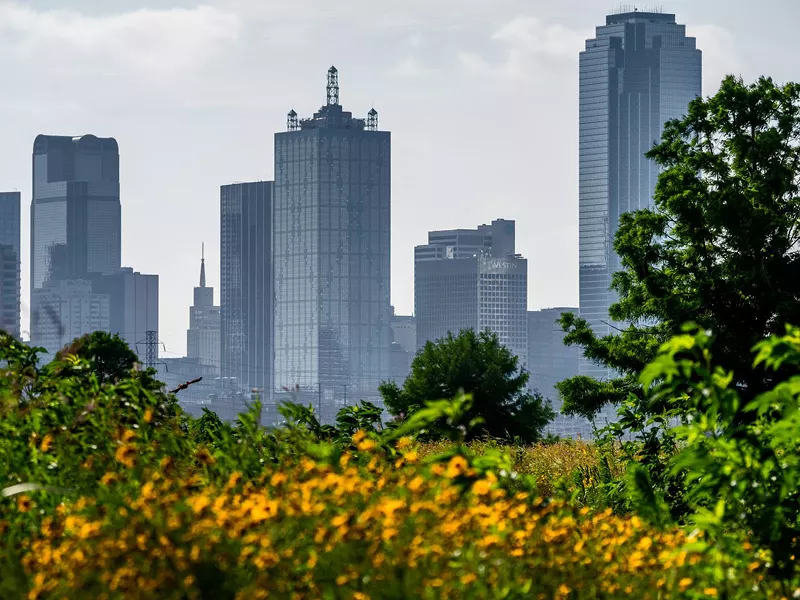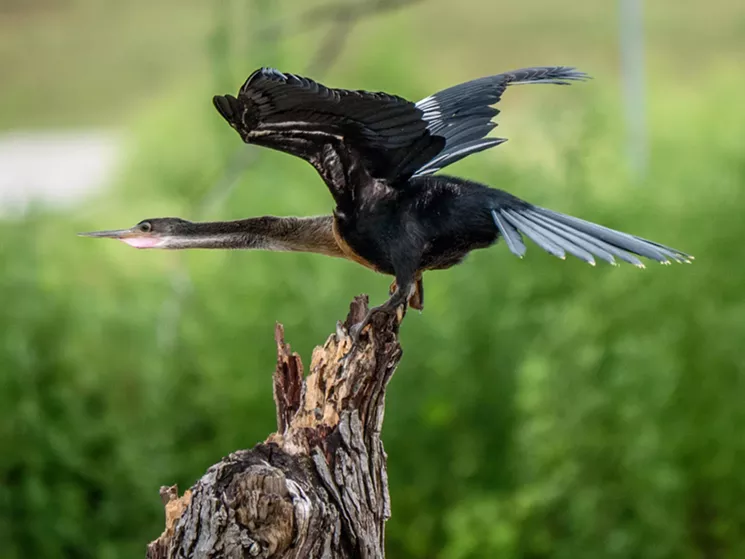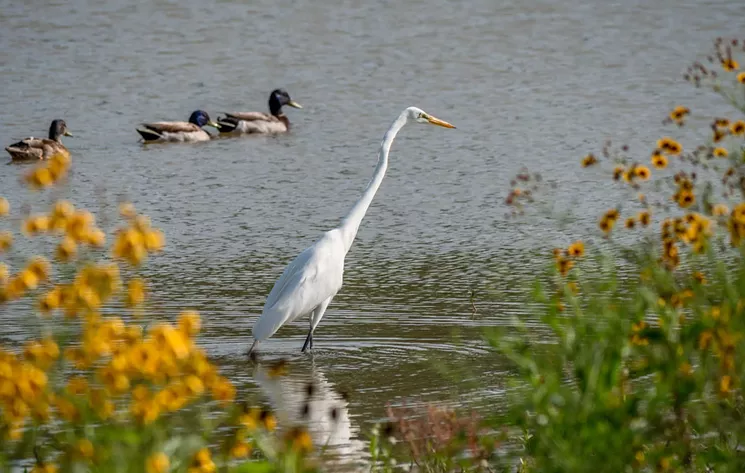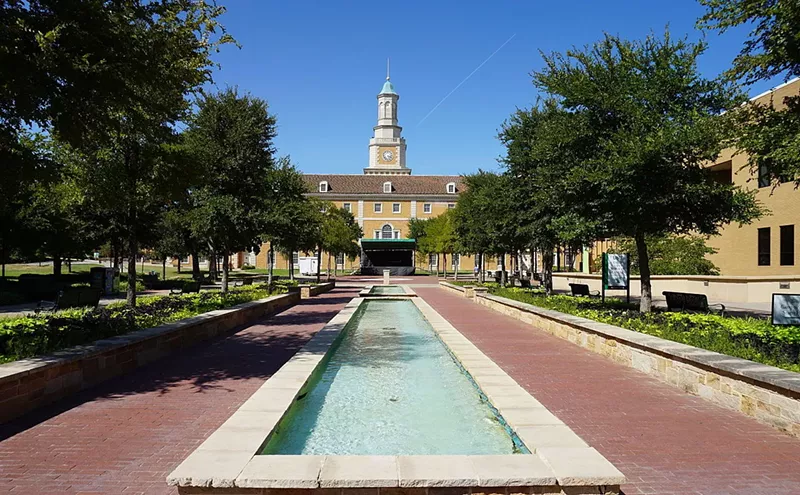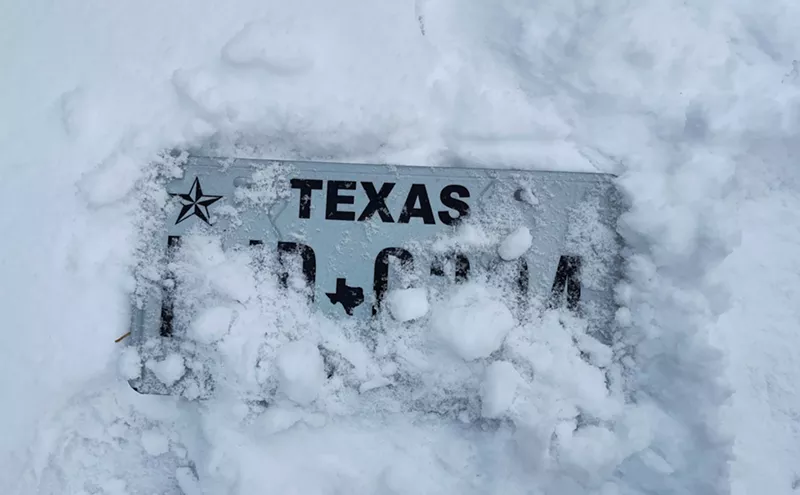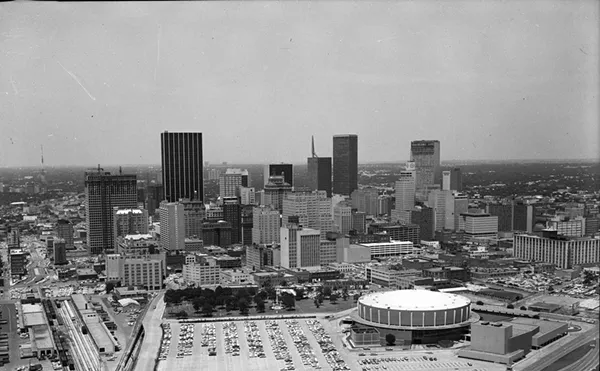But in 2014, Miller and his wife, Marilyn, walked out of their home and discovered a miracle in their own backyard in Dallas — a splendor of nature that Miller has captured in a new book called A Word for Nature, Photographs From Walks on the Trinity Skyline Trail.
The couple's studio, gallery and home were in two battered buildings purchased in 2008 in the old Stemmons Industrial District along the flood-control levees in what is now called the Design District.
“We actually lived on the river for nine years,” he says. “We were on Levee Street, and our backyard was the river.”“We’re lucky we have this. We have it despite ourselves. "— Scot Miller
tweet this
The event that drew them over the 50-foot-high earthen levee and into the river bottom was the 2014 opening of the Skyline Trail, a walking and biking trail between the levees created when City Council members Angela Hunt and Scott Griggs pooled discretionary council district funds to make it happen.
“It was an incredible experience, especially once they opened the Skyline Trail,” Miller says. “It really enabled us to get down close. It was just amazing.
“Last year, we wound up leading four informative walks for people who wanted to go. To a person, people were just amazed.
“I had one guy, a good friend of ours, who is big-big into birding, a real big birder, and he and his wife went on the walk several times.
“After the first time, he said, ‘Scot, I want to tell you, I’m embarrassed. I’m a lifelong Dallas person and a big birder, and I have never been down here. This is the most amazing thing.’
“It’s funny. Like a day or two later, I’m out there walking by myself on the trail, and here comes this same guy and his wife, and they’re bringing somebody else along.
“He was funny. He said, ‘Scot, I’ve gotten up to something like 50 species or something [of birds identified on the trail].'
“There has always been this mental wall,” Miller says. “People have this thought of the river that’s really nothing like what’s down there.”
The experience of discovering the richness of the river has turned Miller into something of a prophet and a proselytizer. His new book, he says, is not a commercial venture.
“This book was not done as a moneymaker. It was done more because I just felt like, why aren’t people out here? It’s because people don’t know,” he says.
He describes his book as a mere sampling of all that remains out there still to be found in 10,000 wild riparian acres where the Trinity River winds through the city. The land, now called The Great Trinity Forest, is in public ownership either because it is prone to flooding or because private owners long ago allowed it to revert to the city for unpaid taxes.
“We’re lucky we have this,” Miller says. “We have it despite ourselves.
“That book is based on walks in our little narrow part of the Trinity Skyline Trail,” Miller says. “That’s not even the whole trail. That’s going out our back door and saying, ‘Do we go left, or do we go right today?’
“Left, we go down by the river and go up to the Margaret McDermott Bridge and then come back. If we go right, we go down by the river and go up to the Trammell Crow Park and go back.
“So what you see is all from just that area. It’s a microcosm of what’s there.”
An urgency invades his tone when Miller gets rolling on the topic of what the city possesses in the Great Trinity Forest and how little Dallas is doing with it.
“We have such an ideal foundation,” he says, “and people don’t know about it.
“My wife and I have experience working with a lot of national park groups, like the Yosemite Conservancy and the Walden Woods Project up in New England. We have seen the things they have done.
“A big part of their mission is not only to conserve nature, but you also have this whole aspect that is interpretive, that is educating people. Hey, first of all, there were Native Americans down here, so what did they do and where are their things?“The man comes out of the wrangle of the shop and office and sees the sky and the woods, and is a man again. In their eternal calm, he finds himself." — Ralph Waldo Emerson
tweet this
“Then we had settlers. There are places in the Great Trinity Forest that I’ve been in, in South Dallas, where you’re in the middle of the forest and there are these huge fenceposts.
“It’s like, ‘What the hell are these doing here?’ Well, 60 years ago, that was farmland. So that’s part of the story. The land has been reclaimed [by nature].
“Then you have the flora and the fauna, all of the animals, all of the plant life and everything that’s there. To me, it’s like it should be the greatest classroom we have in Dallas.
“Why isn’t the Dallas Independent School District somehow more involved than they are in getting kids out there into nature and using the forest to teach lessons. Why aren’t more artists out there painting it? I know I’m on my soapbox.”
Miller's experience elsewhere, he says, tells him Dallas has important decisions it must make now if the natural treasures along the river are to be preserved for the future:
“How are we going to manage these 10,000 acres? In 100 years, Dallas can be known way more for the nature that we set aside than for a nice park and some bridges. Land is a precious resource as time goes on and there are more and more people.
“What we do now is important. I just think it’s the time. The discussion needs to be elevated. Somehow I believe there are some really good people out there. I wish I was the person who had $100 million dollars. I believe there are people in Dallas that get it.
“We have to find whatever that proper way is to set up something so you have the quality of national-park-like resources here.
“You’re managing a park, but you’re also managing the flora, the fauna and how people interact with them. And you’re teaching people. You’re interpreting. You’re managing it for the future.”
Miller is not opposed to the mayor’s main project on the river, a planned 200-acre, half-billion-dollar traditional urban park between two downtown decorative bridges designed by Spanish architect Santiago Calatrava.
“Maybe there is something to be said for having a signature park downtown,” he says. “I’m not against the park. Let’s do the park. But let’s get the rest of this together. Let’s have a plan for 100 years from now, so we have some good organization that’s managing this.”
Miller’s book and the experience he and his wife shared when they walked out their back door and over the levee in 2014 is a perfect coda to the movement launched by the original owner of Walden Pond, 19th century transcendentalist philosopher Ralph Waldo Emerson. The greatest source of inner strength, Emerson preached, is likely to be found in our own backyard:
“The man comes out of the wrangle of the shop and office,” Emerson wrote, “and sees the sky and the woods, and is a man again. In their eternal calm, he finds himself. … But how few men see the sky and the woods!”
Also women, we would now add, of course.

